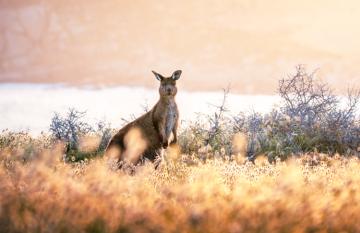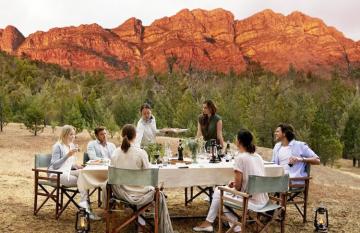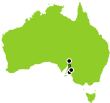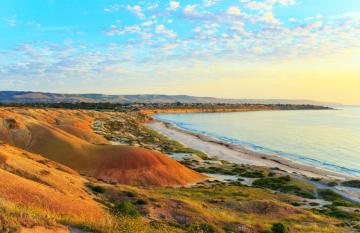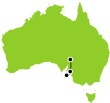
Step into an ancient landscape, over 600 million years old to be exact, and experience some of the rawest natural beauty that Australia has to offer. The Flinders Ranges is a popular destination as part of our South Australian itineraries and for good reason. Intrigued? Find the answers to your most-asked questions about the region below.
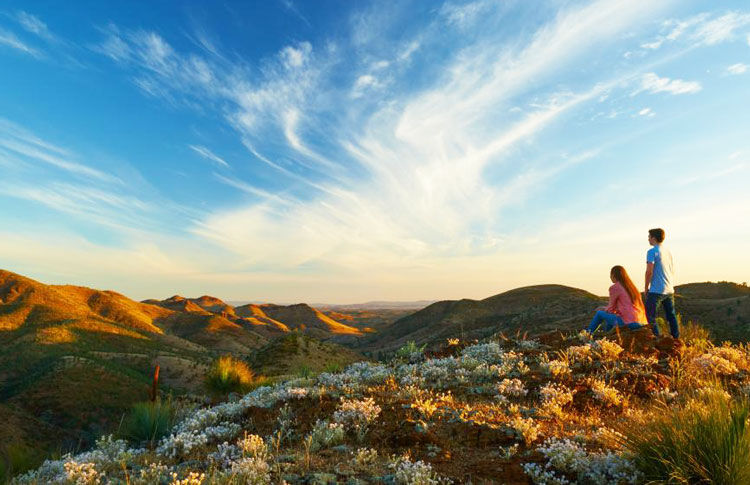
Contents
- What is Flinders Ranges famous for?
- What is the best time to visit Flinders Ranges?
- Do you need a 4WD for Flinders Ranges?
- Do you need a pass for Flinders Ranges?
- What animals live in the Flinders Ranges?
- How long do you need at Flinders Ranges?
- Where do you stay in Flinders Ranges?
- What are the best things to see in Flinders Ranges?
- How do you get to Flinders Ranges from Adelaide?
- Mighty Wilpena Pound
- The Arkaroo Rock Art Trail
Visitor Guide to Flinders Ranges
The Flinders Ranges, a mountainous stretch of outback shaped by millions of years of geological activity, offers some of the most striking scenery found anywhere in the country. The mountain range is the largest in South Australia, rolling into the distance for hundreds of kilometres, and its location makes it one of the most accessible parts of the outback to explore. The vastly arid landscape coloured with dusty yellows and reds offers a fascinating combination of valleys, gorges and creeks, which in turn are home to an incredible array of wildlife.
Interested in visiting this fascinating area as part of your South Australian adventure but have some more queries? Read on for the answers to the most commonly asked questions posed to our First Light Travel team:
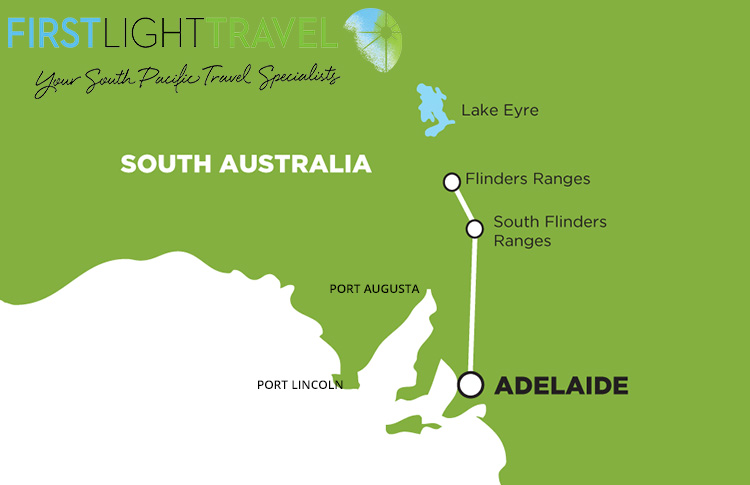
What is Flinders Ranges famous for?
The area is most famous for the ancient mountain range, the largest in South Australia, which is home to the Ikara-Flinders Ranges National Park. The mountains cover an area of over 430 kilometres and the highest point is St Mary’s Peak at an elevation of 1,171 metres.
One of the major landmarks of the ranges is an area named Wilpena Pound, an amphitheatre of mountains that was created naturally over millions of years and covers almost 80 square kilometres.
The ranges are otherwise known for the mixed landscape of gorges, creeks and plains, which are home to an array of wildlife and popular for bushwalking.
What is the best time to visit Flinders Ranges?
The area generally enjoys clear and sunny days for most of the year. However, May to October (autumn to early spring) is when the weather is most temperate, with winter months having the highest chance of rain which fills waterholes and attracts wildlife. It is useful to note that many bushwalking tracks in the area are closed over summer (December-March) as temperatures are deemed too high.
Do you need a 4WD for Flinders Ranges?
Driving is an excellent way to see the district and it is not a requirement to have a 4WD vehicle for self-drive explorations. The main roads in the area are sealed, however, the area is very large and there are some unsealed roads found off the beaten track, which are easier to navigate in a 4WD and may include some creek crossings that require a high clearance vehicle. Speak to one of our expert First Light Travel specialists to discuss your ideal itinerary and we can recommend the best vehicle and routes.
Do you need a pass for Flinders Ranges?
Yes, a park pass is required to enter the Ikara-Flinders Ranges National Park with a vehicle and needs to be purchased in advance. A vehicle pass is priced between $9-11 per day. It is easiest to book these online but they are also available through local visitor information centres. Your First Light Travel specialist will be happy to provide more information on single or multi-park passes.
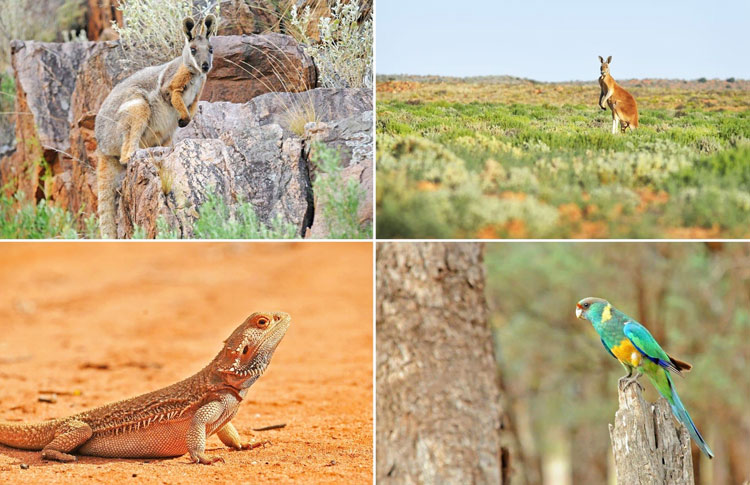
What animals live in the Flinders Ranges?
You have the chance to see a range of animals in the Flinders Ranges, including yellow-footed rock wallabies, red and western grey kangaroos, wallaroos, and short-beaked echidna. Prevalent birdlife includes parrots, galahs, wedge-tailed eagles (the largest bird of prey in Australia) and other smaller raptors such as kestrels, falcons and kites. emus are also found in the area regularly. Reptiles such as snakes, skinks and geckos can be seen all year round while bearded dragons emerge more often around September-October.
How long do you need at Flinders Ranges?
Due to the vastness of the area and the range of explorations on offer, from wildlife safaris and bush walks to scenic flights and excellent accommodation offerings, we recommend at least two nights in the region. You can peruse some of our favourite South Australia self-drive itineraries that include the Flinders Ranges here:
15 Day Grand South Australia Self Drive Tour
7 Day The Very Best of South Australia’s Luxury
Where do you stay in Flinders Ranges?
There is a wealth of excellent accommodation options, from the simple to the more luxurious. Our two top recommendations have been tried and tested by our team and very happy travellers:
Rawnsley Park Station - This 12,000-hectare working sheep station, which was established in 1851 is situated on the southern edge of Wilpena Pound. The property offers a range of accommodation options to suit all budgets, from luxe eco-villas to camping and caravan sites and facilities.
Arkaba Station - Located at the heart of its own wildlife conservancy, Arkaba station is a gorgeous restored homestead and the ideal choice for a high-end experiential stay in the Flinders Ranges. The all-inclusive nightly rate includes all meals and drinks from an open bar alongside comfortable private rooms with spectacular rural views.
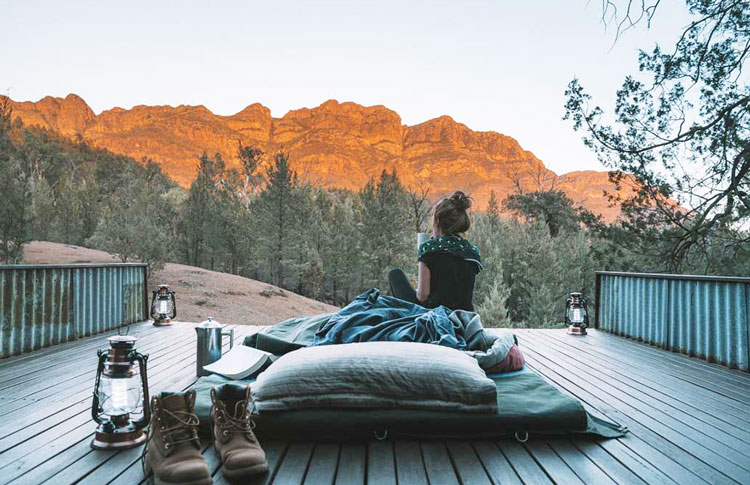
What are the best things to see in Flinders Ranges?
There are so many amazing sights to enjoy in the Flinders Ranges and many can be experienced on our range of South Australian self-drive road trips. Just a few of our preferred activities are as follows:
- A 4WD safari of Bunyeroo and Brachina Gorges - let your driver navigate the rugged terrain so you can experience the stunning scenery and see wildlife in its natural environment. Iconic views and geological formations dating back 600 million years are on the agenda plus Brachina Gorge is home to one of the largest populations of yellow-footed rock wallabies in Australia.
- Bushwalks in Wilpena Pound, Ikara-Flinders Ranges National Park and Mount Remarkable National Park. The best way to see wildlife at Flinders Ranges is by exploring the area on foot. There are endless walking trails to choose from throughout the National Parks from quick strolls to multi-day hikes.
- Sacred Canyon, located in the southern section of Ikara-Flinders Ranges National Park. Here you will find ancient petroglyphs of animal tracks, people and waterholes in the canyon’s stone walls - some of the oldest rock engravings in the world. The site is of great cultural importance to the Adnyamathanha people and is part of Australia’s national heritage so access is restricted to approved guided tours only.
- Scenic Flights over the incredible scenery of Wilpena Pound. From this vantage point, you can really see the natural sickle shape of the mountainous amphitheatre.
- A luxurious all-inclusive stay at Arkaba Station including guided wilderness safaris of their 60,000-acre private wildlife conservancy via open-top 4WD or by foot.
How do you get to Flinders Ranges from Adelaide?
The Flinders Ranges can be reached by car from Adelaide and the journey takes roughly five hours. Alternatively, a 55-minute regional flight from Adelaide takes you to Port Augusta followed by a two-hour drive to Wilpena Pound.
The Flinders Ranges is a great itinerary inclusion for any road trip so take a look at our South Australian itinerary offerings to get inspired. Remember, all of our tours can be completely customised to suit your tastes and create your ideal experience.
Mighty Wilpena Pound
What Is It? At 17-kilometre-long by eight-kilometre-wide elliptical crown of furiously serrated mountains, with a sunken natural amphitheatre in its centre. Wilpena Pound covers eight times the area of Uluru, is 300 metres higher and arguably as culturally significant, yet relatively few Australians know its name or even have the faintest clue where it is.
How was it made? starting around 800 million years ago, in a formation known as the Adelaide Geosyncline. Immeasurable pressure in the Earth’s crust compressed the sediments, folding and cajoling them up into a mountain range that once towered over the Himalayas, before erosion robbed South Australia of its Mountains Kingdom title
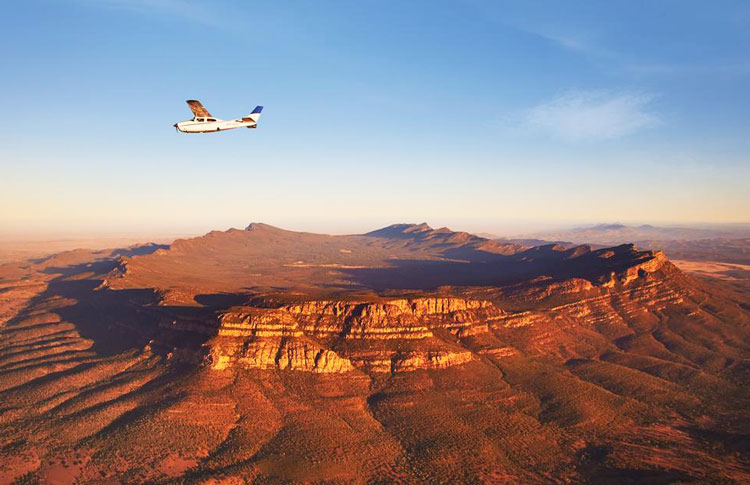
The Arkaroo Rock Art Trail
Arkaroo Rock Walk - Ancient Rock Art and Stunning Views in the Flinders Ranges
Arkaroo Rock is a significant cultural site for the Adnyamathanha people of the Flinders Ranges. This hike goes to a rock shelter with their rock paintings featuring ochre and charcoal images that depict the Yura Muda (Dreaming, or creation story) of Ikara (Wilpena Pound).Enjoy spectacular views of the Chace Range at sunset. The rock paintings are best seen in the morning light.
The trail includes bridges and regular seating benches. There is interpretive signage at the carpark trailhead. The rock art here features reptile and human figures in charcoal, bird-lime, and yellow and red ochre.
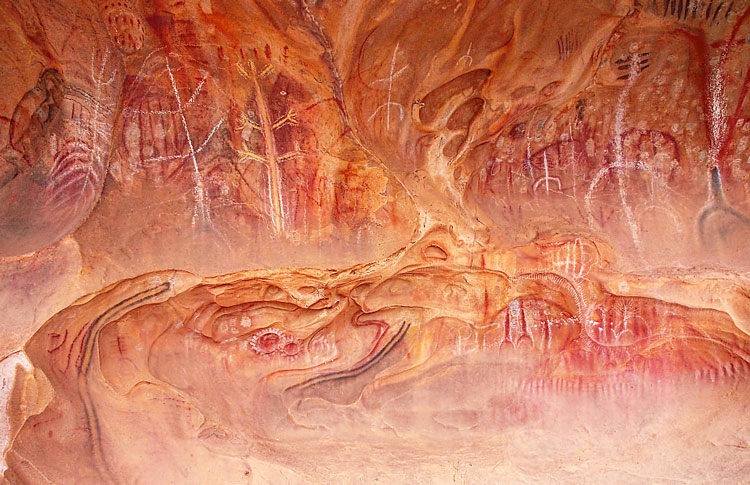
Ready to plan your trip? See our most popular South Australian self drive itineraries here
From family holidays to luxury romantic getaways, we’re here to help you create the trip you need right now!
Recent Posts
Blog Categories
Blog archives
- April 2024 (1)
- March 2024 (13)
- February 2024 (3)
- January 2024 (5)
- December 2023 (6)
- November 2023 (4)
- October 2023 (11)
- September 2023 (2)
- August 2023 (6)
- July 2023 (2)
- June 2023 (17)
- May 2023 (3)
- April 2023 (5)
- March 2023 (8)
- February 2023 (9)
- January 2023 (12)
- December 2022 (9)
- November 2022 (12)
- October 2022 (12)
- September 2022 (12)
- August 2022 (6)
- July 2022 (9)
- June 2022 (7)
- May 2022 (3)
- April 2022 (4)
- March 2022 (6)
- February 2022 (1)
- January 2022 (4)
- December 2021 (2)
- November 2021 (3)
- October 2021 (1)
- September 2021 (4)
- August 2021 (10)
- July 2021 (13)
- June 2021 (6)
- April 2021 (2)
- March 2021 (2)
- February 2021 (1)
- January 2021 (1)
- December 2020 (2)
- November 2020 (3)
- October 2020 (2)
- September 2020 (1)
- August 2020 (1)
- July 2020 (1)
- June 2020 (1)
- May 2020 (1)
- April 2020 (1)
- March 2020 (1)
- February 2020 (2)
- January 2020 (4)
- December 2019 (2)
- November 2019 (1)
- October 2019 (1)
- September 2019 (5)
- August 2019 (1)
- July 2019 (5)
- June 2019 (1)
- May 2019 (1)
- April 2019 (1)
- March 2019 (1)
- February 2019 (1)
- January 2019 (1)
- December 2018 (1)
- October 2018 (1)
- May 2018 (1)
- February 2018 (1)
- December 2017 (1)
- October 2017 (1)
- June 2017 (1)
- May 2017 (1)
- February 2017 (1)
- January 2017 (1)
- September 2016 (1)
- August 2016 (2)
- July 2016 (1)
- June 2016 (1)
- May 2016 (1)
- April 2016 (1)
- December 2015 (1)



